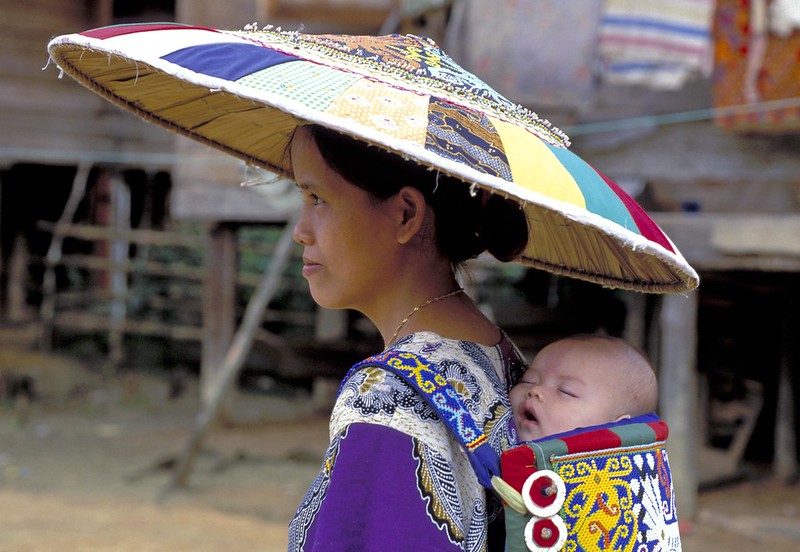Primaquine Indonesia Study Group
Primaquine Indonesia Study Group
The aim of this study is to assess the effect of primaquine mg/kg dose and regimen duration on i) efficacy, ii) tolerability, and iii) safety in patients with P. vivax malaria in Indonesia.

The Primaquine Methaemoglobin Study Group was formed in May 2024. Research groups with relevant data sets were contacted. Data gathering and curation have commenced.
Plasmodium vivax is a major cause of human malaria outside of sub-Saharan Africa. In regions where P. vivax and Plasmodium falciparum have co-existed historically, it is becoming the predominant parasite as malaria control moves towards elimination. Relapsing infections due to dormant liver stages of P. vivax are a major cause of transmission, morbidity, and mortality. Currently, radical cure with an 8-aminoquinoline (primaquine or tafenoquine) is the only effective strategy to prevent vivax relapses.
Recent systematic, individual patient data meta-analyses (1, 2) suggest that a high total primaquine dose of 7 mg/kg can reduce the rate of P. vivax recurrences by half compared to a low total dose of 3.5 mg/kg with only an additional slight increase in gastrointestinal symptoms; and patients receiving a daily primaquine dose of up to 0.5 mg/kg with glucose-6-phosphate dehydrogenase [G6PD] activity of at least 30% have comparable risks of haemolysis to those not receiving primaquine. However, in different locations, uncertainties remain in which regimen is the most effective and safe considering the complex interactions between patient (e.g., prevalence of GG6PD deficiency and impaired cytochrome P450 [CYP] 2D6, immunity to malaria), parasite (e.g., relapse periodicity, strain, drug resistance), and geographical (e.g., access to G6PD testing and quality health care, vector presence, transmission intensity) factors. They result in varying background risks and potential benefits. In real-world settings, the optimal regimen may well be context specific.
Vivax malaria is highly prevalent in Indonesia. Primaquine remains the only 8-aminoquinoline recommended in the Indonesian national guidelines to prevent vivax relapses; however, the optimal dose of primaquine remains unclear. Indonesian national guidelines recommend a low-dose regimen (3.5 mg/kg total dose; 0.25 mg/kg/day for 14 days) with no universal G6PD testing for most cases, but a higher dose (7mg/kg total; 0.5mg/kg/day over 14 days) can be used for “known relapse” or treatment failure. WHO recommends 0.5 mg/kg/day over 14 days (7 mg/kg total dose) for frequent relapsing P. vivax in tropical settings in Southeast Asia including Indonesia. Heterogeneous efficacy and safety of primaquine may exist across Indonesia. This study will focus on the Indonesian context to inform national malaria control policy on the optimal regimen of primaquine that balances risks and benefits.
The aim of this study is to assess the effect of primaquine mg/kg dose and regimen duration on i) efficacy, ii) tolerability, and iii) safety in patients with P. vivax malaria in Indonesia.
Embase, Medline, Web of Science, and the Cochrane Library will be systematically searched based on an existing living systematic review (3); to identify prospective, clinical efficacy studies of acute, uncomplicated vivax malaria published between 1 January 2000 and 29 September 2022, inclusive, in any language with a minimum active follow-up of 28 (for safety and tolerability) or 42 days (for efficacy).
Relevant data from unpublished studies will be obtained where possible. Studies that fulfil the study criteria will be targeted through direct email to the corresponding author and/or principal investigator.
Essential criteria of eligible studies
- Prospective clinical efficacy studies conducted in Indonesia, including randomised trials and prospective cohort studies, of uncomplicated P. vivax monoinfection
- A minimum active follow up of 28 #,§ or 42* days
- Treatment with chloroquine or quinine or one of six common artemisinin-based combination therapies (ACT; artemether-lumefantrine, artesunate-mefloquine, artesunate-amodiaquine, dihydroartemisinin-piperaquine, artesunate-sulfadoxine-pyrimethamine, artesunate-pyronaridine)
- At least one treatment arm with daily primaquine given over multiple days and commencing within seven days of blood schizontocidal treatment
- Study meta-data as described in the WWARN Data Management and Statistical Analysis Plans (4).
Essential data for inclusion in the analysis
- Information on dose of schizontocidal treatment
- Information on use, timing, and mg/kg dose of primaquine
- Baseline data on patient age, sex, weight
- Asexual parasite density at day 0
- Reporting of parasite presence or absence during follow up*
- Haemoglobin (hb) or haematocrit (hct) measured on day 0 and at least once during follow up on days 1–28 #
- Presence of gastrointestinal disturbance (vomiting, anorexia, diarrhoea) during follow up §
*Efficacy analysis
# Safety analysis
§ Tolerability analysis
PROSPERO ID: 580630
- Desirable data for inclusion in the analysis
- Individual tablet or mg dosing
- Documentation on the supervision of drug administration
- Data on food administration with primaquine
- Qualitative or quantitative assessment of G6PD status
- CYP2D6 genotype/phenotype
- Methaemoglobin measured on day 0 and during follow up
- History of malaria within the past 28 days
- History of fever within the last 24 hours at baseline and during follow up
- Data on vomiting within 1-hour post-administration
- Follow up for 180 days or longer
- Primaquine or metabolite drug levels during follow up
- Partner drug levels in terminal elimination phase (e.g., day 7 levels)
- Follow up through multiple malaria recurrence events
- Genotyping to potentially distinguish recrudescence and reinfection
PRISMA Flow* Link to IDP prisma flow diagram only once manuscript is published
Once data are uploaded into the WWARN repository, they will be curated and standardised using the WWARN Data Management and Statistical Analysis Plans (4) for clinical data and pooled into a single database of quality-assured individual patient data.
A summary of the distribution of mg/kg primaquine dose will be presented.
Time to first recurrent vivax parasitaemia will be used to compute the Kaplan-Meier estimates of risk of P. vivax recurrence at day 180 for treatment arms with and without primaquine for each study site where there was a minimum of 42 days follow up. Patients will be censored at time of recurrent vivax parasitaemia, first malaria treatment, lost to follow up, >67 day blood smear gap, last day of study or the day the outcome is being assessed. The Kaplan-Meier curves stratified by categories of primaquine total dose and no primaquine use will be presented.
Cox proportional hazards model will be fitted to the time to first recurrence during follow-up (between day 7 and day 180) with primaquine total dose (mg/kg, categorical and continuous separately), age (years), sex (male, female), baseline parasite density (parasites per μL blood, on the log scale), and study site as covariates. An assumed causal directed acyclic graph (DAG) underlies this model specification.
The percentage of patients with each of the following symptoms reported on days 5–7 (vomiting, nausea, anorexia, abdominal pain, diarrhoea) will be presented in a tabular format. A Poisson regression analysis will be undertaken to determine the effect of daily mg/kg primaquine dose (a categorical variable categorised as no primaquine, low dose, intermediate dose, and high dose) on the risk of fulfilling criteria for the composite gastrointestinal endpoint on days 5–7. The effect of daily primaquine dose (mg/kg) will be controlled for age (years), sex (male, female), baseline parasite density (parasites per μL blood, on the log scale), and study site as implied by a causal graph.
Multivariable Poisson regression analyses will be undertaken to determine the effect of daily mg/kg primaquine dose on the risk of >25% drop in haemoglobin between baseline and days 1–14 to below 7g/dL in patients with 30% G6PD activity. Covariates to be adjusted in the model include age, sex, baseline parasite density, haemoglobin at baseline, and study
Other descriptive and exploratory analyses are detailed in a statistical analysis plan.
The Primaquine Indonesia Study Group comprises participating investigators who contribute relevant data sets to the pooled analysis. Data sets will remain the property of the investigator and will not be shared without their consent. Ihsan Fadilah, Robert Commons, and James Watson will oversee the statistical analyses. Participating investigators will be recognised in publication as contributors. A Writing Committee will coordinate activities including data analysis and drafting of publications and reports for complete group review. The Writing Committee will comprise Ihsan Fadilah, Ayodhia Pitaloka Pasaribu, Robert Commons, James Watson, Kevin Baird, Ric Price, and other interested investigators. They are responsible for undertaking the data analysis and preparation of the manuscript. Authors will be recognised according to the ICMJE guidelines and the WWARN publication policy.
For further information, please contact Ihsan Fadilah on email: ifadilah@oucru.org
- Commons RJ, Rajasekhar M, Edler P, Abreha T, Awab GR, Baird JK, et al. Effect of primaquine dose on the risk of recurrence in patients with uncomplicated Plasmodium vivax: a systematic review and individual patient data meta-analysis. The Lancet Infectious Diseases. 2023.
- Rajasekhar M, Simpson JA, Ley B, Edler P, Chu CS, Abreha T, et al. Primaquine dose and the risk of haemolysis in patients with uncomplicated Plasmodium vivax malaria: a systematic review and individual patient data meta-analysis. The Lancet Infectious Diseases. 2023.
- Commons RJ, Thriemer K, Humphreys G, Suay I, Sibley CH, Guerin PJ, et al. The Vivax Surveyor: Online mapping database for Plasmodium vivax clinical trials. The International Journal for Parasitology – Drugs and Drug Resistance. 2017;7(2):181-90.
- Infectious Diseases Data Observatory (IDDO). IDDO SDTM implementation manual 2023 [Available from: https://www.iddo.org/tools-and-resources/data-tools.







